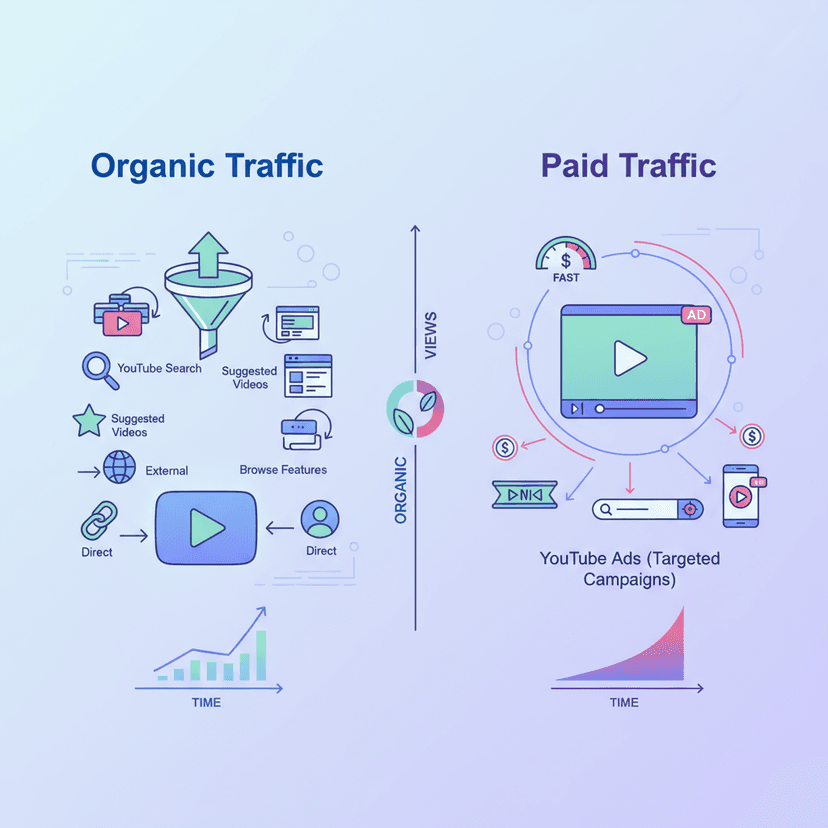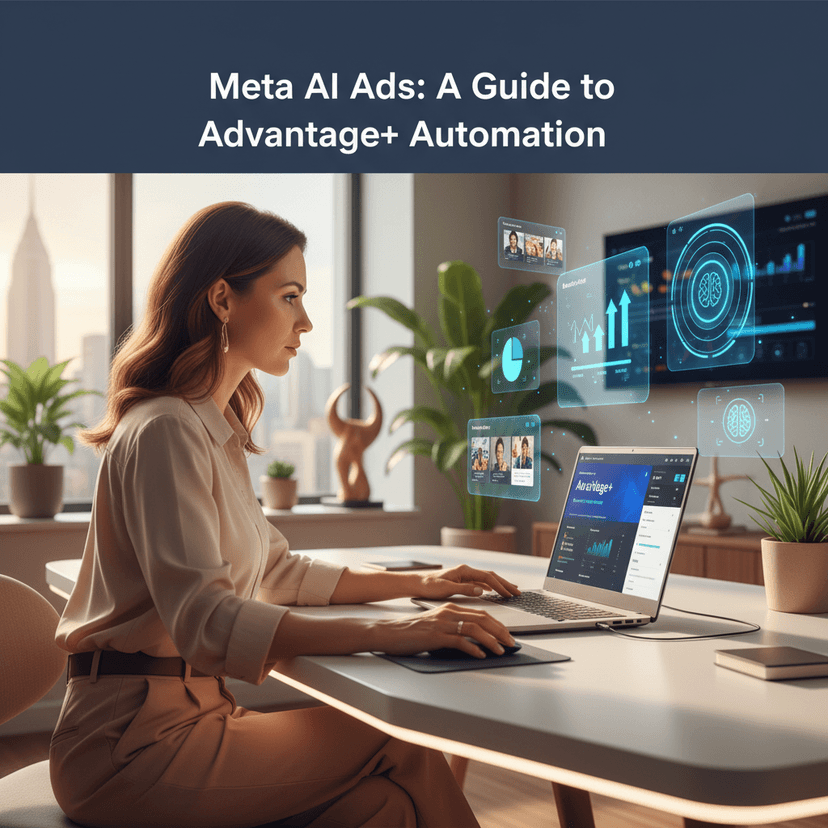Running Google Ads advertising with a PPC or Pay-Per-Click system is one of the popular formats used by online businesses because the payment model is only when someone clicks on the ad. This system helps businesses advertise their products or services on the Google search results page and websites that are Google Partners.
Although Google Ads is a PPC advertising system and a powerful tool, using it effectively is not always easy. There are many factors to consider, including various metrics, target markets, and budgets. And sometimes, even after setting up a campaign well, problems can still arise. Therefore, today we will look at 5 Red Flag signals to watch out for when running a Google Ads campaign and how to fix them.
5 Red Flags in a Google Ads Campaign and How to Fix Them
1. A CTR Too Low
CTR or Click-Through Rate is an important metric that indicates the relevance between keywords, ads, and user searches. With automated bidding strategies and Responsive Search Ads (RSAs), the current CTR rate is approximately 5-6% in most industries. So, if you find that the CTR value is lower than this, be careful that your advertising campaign may be experiencing problems, such as low relevance, reducing ad effectiveness.
Solving the problem of a low CTR can be done in two ways. The first method is to check the Assets Reports, which is a report showing the performance of headlines and descriptions in the ad. If you find any parts that have “low” or “medium” performance, consider changing them. You may use language that appeals to the target audience or focus on unique selling points that differ from competitors, for example.
Another method is to review Ad Groups because over time, ad groups and keywords may expand too widely, causing inconsistencies. So, try separating high-performing keywords into new groups and customizing ad copy to be more specific to each group. For example, if you have a shoe store, you might separate ad groups into “running shoes,” “fashion shoes,” and “work shoes,” and write ad copy that highlights the strengths of each type of shoe.
2. Incomplete Advertising Campaign Settings
Returning to the basics of incorrect or incomplete campaign settings, which may cause ads to be ineffective. Especially the Location settings, which have a default value of “People interested in your targeted locations,” which in reality should be “People in your targeted locations.” Including other settings as well.
For Google Ads advertising, targeting languages by matching keywords that are exactly the same. And Google believes that users understand the target language at least one language. That means Google Ads will try to show ads to users who are likely to understand the language we use in the ad, even if the device or browser language settings of the target audience are different. Conversely, Microsoft Ads has a different approach. Language settings in Microsoft Ads campaigns define the language to be used when writing ads and should be the same language as the target audience uses.
In addition, always check the language settings to match the language of the target audience, especially for businesses marketing online in multiple countries. By creating separate campaigns for each language and writing ad copy in that language directly, not just translating from the main language we use. Because using local language will make the ad look more natural and credible, increasing the chances of getting a higher CTR and increasing the chance of conversion.
3. Lack of Exclusion Settings
When running Google Ads advertising, PPC experts always set up several exclusions. Along with updates from Google that promote Broad Match, Performance Max, and various automation features, marketers need to pay more attention to setting exclusions. If appropriate exclusions are lacking, the campaign may not be as effective as it should be.
We can set important exclusions as follows:
These exclusion settings when running Google Ads will help your advertising budget be used more efficiently by focusing on target audiences who are likely to generate sales for your business.
4. Low Quality Score
Quality Score is a measure of how good your ads are compared to other advertisers. It ranges from 1 (lowest) to 10 (highest). It is calculated from Auction Insights for the latest 90 days. Generally, ads with a score of 7 or higher are considered “good.” But if the score is below 3, you should improve your ads as soon as possible.
To start solving the problem of a low quality score, you need to consider improving all three main components that affect the score. Namely, Expected CTR, Ad Rank, and Landing Page Experience. Start by improving Expected CTR or click-through rate. This can be done by customizing ad copy to be more interesting and relevant. Try using attention-grabbing words (Power Words) or offering special offers, such as “50% off today only” or “30-day money-back guarantee” to increase the chances of getting clicks.
Next, improve Ad Rank by making your ads more aligned with the Search Intent of users. Match keywords with ad copy and landing pages as closely as possible. For example, if the keyword is “discount running shoes,” the ad copy should mention running shoes and discounts directly, and the Landing Page should be a page displaying running shoes that are currently on sale.
Finally, improving the landing page experience is very important. Make sure the page users will reach after clicking the ad has relevant and useful content. The page should load quickly, be easy to use, and have complete information as promised in the ad. In addition, design it to support mobile usage. Because many users access websites via mobile devices such as smartphones and tablets.
5. No Conversion Data
Many marketers define PPC advertising performance measurement through the number of conversions that occur. If the conversion number is 0, you can immediately tell that the campaign needs to be improved urgently. But if there is no conversion data appearing at all, it is a very worrying sign.
Solving the problem of no conversion data starts easily from setting up conversion tracking correctly and completely. Start by identifying what is a conversion for the business. For example, it may be a product purchase, subscription, or contact form submission. Then use Google Ads’ conversion tracking tool to install tracking code on the website.
In addition to tracking the main goal, consider tracking lighter “conversions” as well. This will help the system have enough data to adjust and learn user behavior, which will help improve campaign performance in the long run.
Running Google Ads effectively requires continuous learning and improvement. Being aware of these 5 signals and knowing how to fix them will help you improve your campaign performance quickly and effectively. Remember that the PPC advertising system is constantly changing, so staying informed and updating your knowledge is essential. Try applying these techniques to your campaign and you will see better results.
About Relevant Audience
We are Relevant Audience, a Digital Performance Marketing Agency specializing in SEO and one of the Digital Agency providing comprehensive digital marketing services to support businesses in reaching their target audiences at the right time, place, and device.
Our services cover both SEO services, Search Marketing, Social Media Ads, Search Ads, to Influencer Marketing, and we are also a SEO Company that is Google Partners. Our team consists of specialists ready to provide advice and find solutions that meet business needs.
Contact us for more information, consult online marketing
Tel: 02-038-5055
Email: info@relevantaudience.com
Website: www.relevantaudience.com







